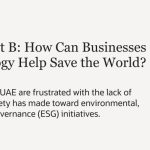Accelerating enterprises prefer hybrid cloud

Emerging technologies including AI, ML, edge and serverless computing present a variety of new opportunities whilst skill gaps are identified as the top barrier to digital transformation initiatives. Another significant factor is that digital transformation leaders are increasingly planning a hybrid cloud strategy, instead of remaining solely dependent on either private or public clouds.
Organisational priorities shift between the different stages of digital transformation initiatives. Decision makers in organisations in earlier stages are more likely to focus on cost reduction and simplification. But those in the emerging and other later stages most often chose innovation as their top priority, according to data in Red Hat’s Global Technology Outlook 2022.
Last year, many organisations were forced to rethink their day-to-day operations as workforces across the globe went remote. Industry buzzwords like digital transformation that may have been five-year plans became overnight priorities for organisations across the board.
Many digital transformation projects start as IT efficiency or remote customer or employee engagement efforts but, later, come to be seen as crucial for improving competitiveness, revenue growth, and customer experience. People are an important part of digital transformation.
When it comes to cloud strategy, organisations that consider themselves to be in the leading or accelerating stages of their digital transformation have a strong preference for hybrid cloud.
This is in contrast to organisations that are in the earlier stages of their digital transformation, who tend towards a private cloud-first approach. This suggests that digital transformation leaders understand and are able to take advantage of the flexibility and consistent experience of an open hybrid cloud platform because they do not want to be dependent on a single cloud.
While Red Hat as a company has experienced significant change in the past two years, it remains committed to open source, both as a technology and a philosophy of leadership, management and employee relationships.
Principal challenges for decision makers
- Talent gaps is the top barrier to digital transformation.
- Other challenges that regional IT and technology companies face are integration issues and organisational resistance to change.
- Digital transformation is the progressive accumulation of new approaches to people, process, technology to create better business outcomes.
- Closing talent gaps, accelerating cloud-ready applications, establishing a hybrid cloud platform, are part of effective digital transformation.
Key Takeaways
- Organisational priorities shift between the different stages of digital transformation initiatives.
- Decision makers in organisations in earlier stages are more likely to focus on cost reduction and simplification.
- Decision makers in later stages choose innovation as their priority.
- Digital transformation projects start as IT efficiency or remote customer or employee engagement efforts.
- Later, digital transformation projects come to be seen as improving competitiveness, revenue growth, and customer experience.
- People are an important part of digital transformation.
Transformation leaders take advantage of the flexibility of open, hybrid cloud platforms because they do not want to be dependent on a single cloud.






